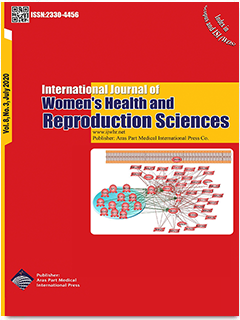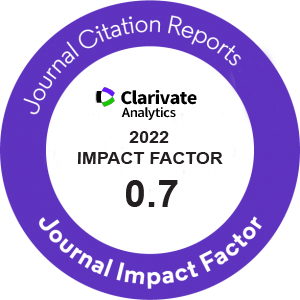| Original Article | |
| Changes in Umbilical Artery Doppler Velocimetry After Betamethasone Administration in Pregnancies With Fetal Growth Retardation | |
| Simin Taghavi1, Tahereh Alizadeh Ghaleh Lar2, Fatemeh Abasalizadeh1, Maryamalsadate Kazemi Shishavan3, Shamsi Abasalizadeh1, Sanaz Moosavi1, Zahra Fardi Azar1, Mojgan Mirghafourvand4 | |
| 1Department of Obstetrics and Gynecology, Women?s Reproductive Health Research Center, Alzahra Teaching Hospital, Tabriz University of Medical Sciences, Tabriz, Iran 2Alzahra Teaching Hospital, Tabriz University of Medical Sciences, Tabriz, Iran 3Department of Community Medicine, Faculty of Medicine, Tabriz University of Medical Sciences, Tabriz, Iran 4Department of Midwifery, Social Determinants of Health Research Center, Tabriz University of Medical Sciences, Tabriz, Iran |
|
|
IJWHR 2020; 8: 311-318 DOI: 10.15296/ijwhr.2020.50 Viewed : 2061 times Downloaded : 3843 times. Keywords : Betamethasone, Color Doppler, Fetal growth retardation, Umbilical artery |
|
| Full Text(PDF) | Related Articles | |
| Abstract | |
Objectives: The administration of betamethasone is associated with increased placental vascular resistance results in the return of the diastolic flow. This study aimed to assess the changes in the flow velocity waveform (FVW) color Doppler in the umbilical artery after the administration of betamethasone in pregnancies with fetal growth retardation (FGR). Materials and Methods: This descriptive-analytical research included all pregnant women who were referred to Al-Zahra teaching hospital and diagnosed with FGR. The eligibility criteria were the impaired umbilical artery FVW color Doppler, qualified for the administration of a fix-dosed Betamethasone, and no fetal abnormalities. The perinatologists performed the FVW color Doppler ultrasonography before and after the administration of betamethasone at intervals of 24, 48, and 96 hours and weeks 1 and 2. FVWs were obtained by pulsed-wave Doppler ultrasonography. Then, neonatal outcomes were recorded based on neonates? admission documents. Finally, one-way repeated measures ANOVA, Cochran?s Q test, and paired-samples t-test were used to compare Doppler indices before and after betamethasone administration. Results: The mean pulsatility index (PI) and resistance index (RI) of the umbilical artery showed a statistically significant reduction after the administration of betamethasone (P < 0.001). The measured umbilical artery PI at two weeks after drug administration predicted the neonatal intensive care unit admission (P = 0.042). Eventually, the results revealed no significant association between the amniotic fluid index (AFI) and betamethasone administration (P = 0.3). Conclusions: In general, betamethasone administration improved the FVWs of the umbilical artery in pregnant women with fetal growth restriction while no association was found between the AFI and betamethasone administration. |
Cite By, Google Scholar
Google Scholar
PubMed
Online Submission System
 IJWHR ENDNOTE ® Style
IJWHR ENDNOTE ® Style
 Tutorials
Tutorials
 Publication Charge
Women's Reproductive Health Research Center
About Journal
Publication Charge
Women's Reproductive Health Research Center
About Journal
Aras Part Medical International Press Editor-in-Chief
Arash Khaki
Mertihan Kurdoglu Deputy Editor
Zafer Akan























